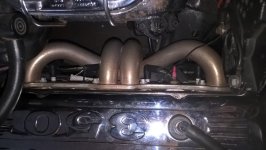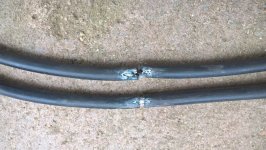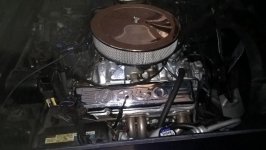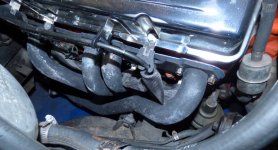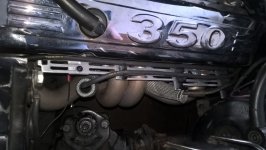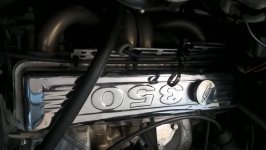Forrest Gump
CCCUK regional rep
Both of these comments your notes that I‘ve high-lighted above still sound carb related to me.Latest update/progress to date.
Stripped carb and rebuilt with new gaskets, accelerator pump cup seal and fuel shut off valve.
Carb was actually very clean. I guess the paper filter on carb fuel inlet has done a good job -however I renewed the filter.
Decided to check the fuel supply right back to the fuel tank.
Removed sender unit / filter and found tank and filter to be very clean, no significant debris.
Checked fuel lines from tank to pump all still like new.
Decided to replace fuel pump, fitted new Carter pump.
Started car up and although initially seemed better, still has rough running / poor initial acceleration.
Decided to re-look at ignition system.
Removed all spark plugs - all are whitish/grey/very light brown colour, but perhaps if anything indicating running a little lean.
Checked compression on all cylinders when cold and engine turned 4 or 5 times using starter.
All cylinders range from 160 to 175psi.
Re-fit spark plugs / attach strobe light to no 1 spark plug/lead.
Started engine and ignition timing at idle was way out - perhaps 20 degrees before tdc - I should have checked this right at the start of problems !!!!
Checked distributor and clamp bolt was still tight and distributor body still in original position (I know this because I had put white paint on
distributor body/clamp to reference their relationship).
I now suspect the timing chain may have jumped a tooth !!!!
This would support the sudden change in engine running from superb to rough.
I re-set the ignition timing and engine is running better at idle/low revs, but dies on acceleration, still runs rough.
Hence, still thinking timing chain is the problem.
I dont want to launch straight into removing the radiator, water pump/timing cover etc to get at the timing chain without being absolutely sure.
But how else could the ignition timing suddenly jump so far out?
The only other explanation could be if the drive pin for the distributor has sheared, I will check this.
My next plan is to remove the valve cover to expose the valves for no 1 cylinder and check the timing of the opening of no 1 inlet valve.
If the timing chain has jumped a tooth, I would expect this to be well out also.
If it is out, then I guess I have no option but to replace the timing chain/gears.
All in all this is proving to be challenging/frustrating, but it is teaching me a great deal about owning a 40 year old Corvette !!!
Has anyone else experienced a timining chain jumping a tooth?
So the engine stumbles when you touch the throttle, but eventually (perhaps with just moderate throttle) it starts to improve as the revs rise?
Are you definitely getting a good squirt into the carb from the accelerator pump?

